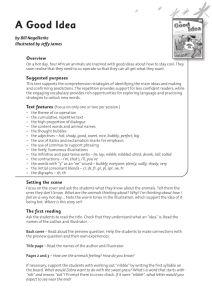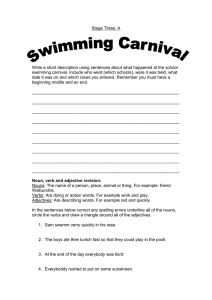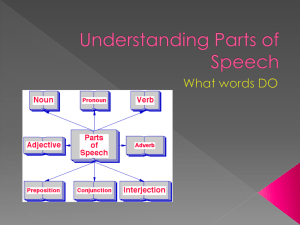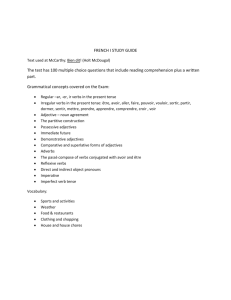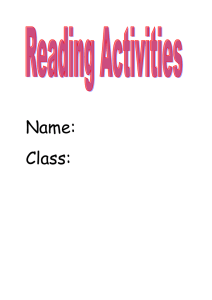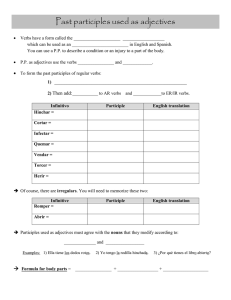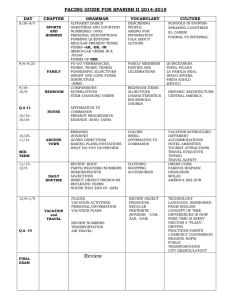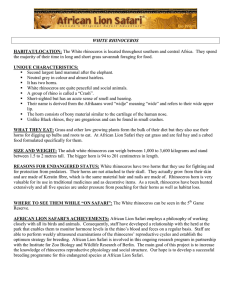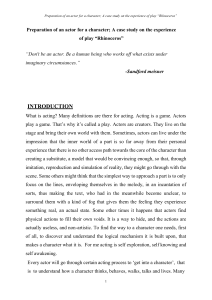A Good Idea TSM - Literacy Online
advertisement
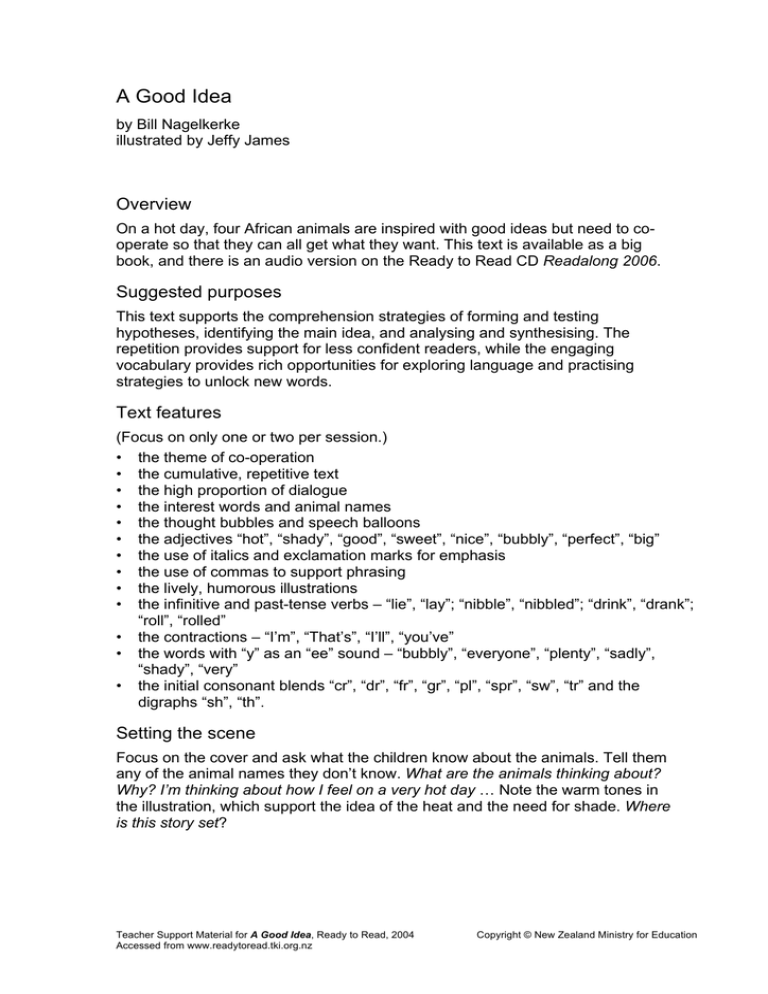
A Good Idea by Bill Nagelkerke illustrated by Jeffy James Overview On a hot day, four African animals are inspired with good ideas but need to cooperate so that they can all get what they want. This text is available as a big book, and there is an audio version on the Ready to Read CD Readalong 2006. Suggested purposes This text supports the comprehension strategies of forming and testing hypotheses, identifying the main idea, and analysing and synthesising. The repetition provides support for less confident readers, while the engaging vocabulary provides rich opportunities for exploring language and practising strategies to unlock new words. Text features (Focus on only one or two per session.) • the theme of co-operation • the cumulative, repetitive text • the high proportion of dialogue • the interest words and animal names • the thought bubbles and speech balloons • the adjectives “hot”, “shady”, “good”, “sweet”, “nice”, “bubbly”, “perfect”, “big” • the use of italics and exclamation marks for emphasis • the use of commas to support phrasing • the lively, humorous illustrations • the infinitive and past-tense verbs – “lie”, “lay”; “nibble”, “nibbled”; “drink”, “drank”; “roll”, “rolled” • the contractions – “I’m”, “That’s”, “I’ll”, “you’ve” • the words with “y” as an “ee” sound – “bubbly”, “everyone”, “plenty”, “sadly”, “shady”, “very” • the initial consonant blends “cr”, “dr”, “fr”, “gr”, “pl”, “spr”, “sw”, “tr” and the digraphs “sh”, “th”. Setting the scene Focus on the cover and ask what the children know about the animals. Tell them any of the animal names they don’t know. What are the animals thinking about? Why? I’m thinking about how I feel on a very hot day … Note the warm tones in the illustration, which support the idea of the heat and the need for shade. Where is this story set? Teacher Support Material for A Good Idea, Ready to Read, 2004 Accessed from www.readytoread.tki.org.nz Copyright © New Zealand Ministry for Education The first reading These notes are suggestions for using this book for guided reading. If you’re using the big book for shared reading, encourage the children to read along with you and increase the level of support. Ask the children to read the title. Check that they understand what an “idea” is. Read the names of the author and illustrator. Title page – What is this illustration reminding us of? Page 2 – How are the animals feeling? How do you know? Page 3 – If necessary, support the children with working out “nibble” by writing the first syllable on the whiteboard. What would Zebra want to do with the sweet grass? What’s a word that starts with “nib” and means “eat”? Prompt them to cross-check. If it were “nibble”, what letter would you expect to see near the end of the word? Encourage the children to predict the text structure. Who else will be in the story? What will they say? Page 4 – If the children are unsure of the meaning of “spring”, explain that it has more than one meaning but that there’s a clue in the next part of the sentence. Encourage them to use the illustration to cross-check. Talk about the text pattern. Is this what you thought might happen? How is the text changing on each page? What will Warthog say? Page 5 – Use the word “Warthog” to demonstrate that there is often more than one way to view unfamiliar words: it’s tempting to focus on the medial “th”, but it’s easier to decode this word when broken into its two syllables. Page 6 to 10 – Is this what they were looking for? Imagine how they would feel… Page 11 – What part tells you that Rhinoceros took a long time to get to the tree? Poor Rhinoceros. That doesn’t seem fair … What will the other animals do? Pages 12 and 13 – I wonder if the animals are going to help Rhinoceros. Should they help him? Pages 14 and 15 – Is Rhinoceros telling the truth, or is he tricking them? Page 16 – Check that the children understand how Rhinoceros’s plan worked. Encourage the children to think critically: There are lots of ideas in this story, but the title only mentions one idea. Which idea do you think the writer was thinking about when he chose the title? Ideas for revisiting the text (Choose only one or two per session.) Listen to the children reread the text, observing their ability to read expressively and fluently and their confidence with the interest words. If necessary, review the use of commas to support phrasing and pace and practise by reading pages 4 and 5 together. Discuss the narrative structure. Identify the introduction, the problem, the anticlimax on page 11, and the satisfying ending. Teacher Support Material for A Good Idea, Ready to Read, 2004 Accessed from www.readytoread.tki.org.nz Copyright © New Zealand Ministry for Education Focus on the use of adjectives in the text. Draw out the idea that the adjectives add clarity and interest and help the reader imagine how the animals are feeling. Focus on the use of repetition and words with similar meanings on page 14. Find the word that tells us how much sweet grass there was. Is the same word used to describe the amount of water? How much mud is there? Why didn’t the writer use the same word each time? Compare the infinitive forms of the verbs “drink”, “lie”, “nibble”, and “roll” with their past-tense forms. Explain that some verbs can’t have “ed” added to them and that the children need to use their knowledge of spoken English to decide what sounds right. For ESOL children, who are less likely to be able to draw on their knowledge of English, try to use these verbs often in subsequent conversations and in reading and writing sessions. You may need to explain that the word “lie” has two meanings and that when the meaning is “to lie down”, the past-tense form is “lay”. Focus on any initial consonant blends or digraphs that caused difficulty. Locate examples in the text and list other words that start the same way. Write the words “very” and “shady” on the whiteboard and read them together. What do you notice about the end sounds of these words? Have the children find other words in the text that have “y” as an “ee” sound. Suggestions for further tasks Listen to the audio version on the CD Readalong 2006. Reinforce the children’s understanding of nouns and adjectives by having them create new sentences based on the models in the text, for example, “A long swim would be very nice.” Write thought bubbles for the characters on page 16. Use the text for Readers’ Theatre or perform it as a play for finger puppets. Teacher Support Material for A Good Idea, Ready to Read, 2004 Accessed from www.readytoread.tki.org.nz Copyright © New Zealand Ministry for Education
